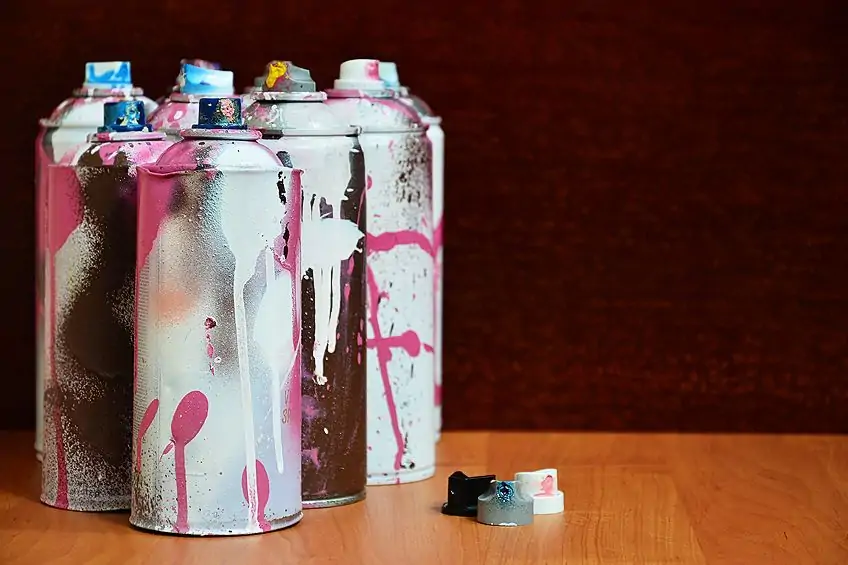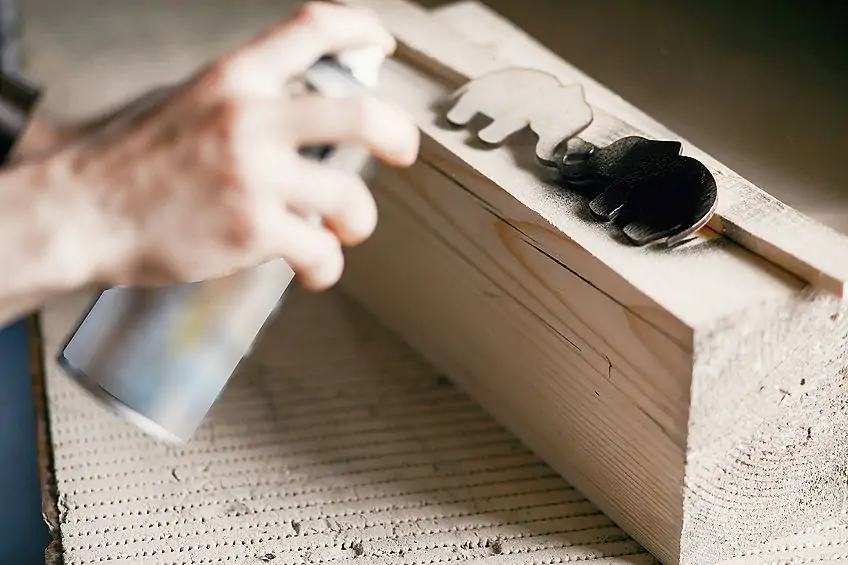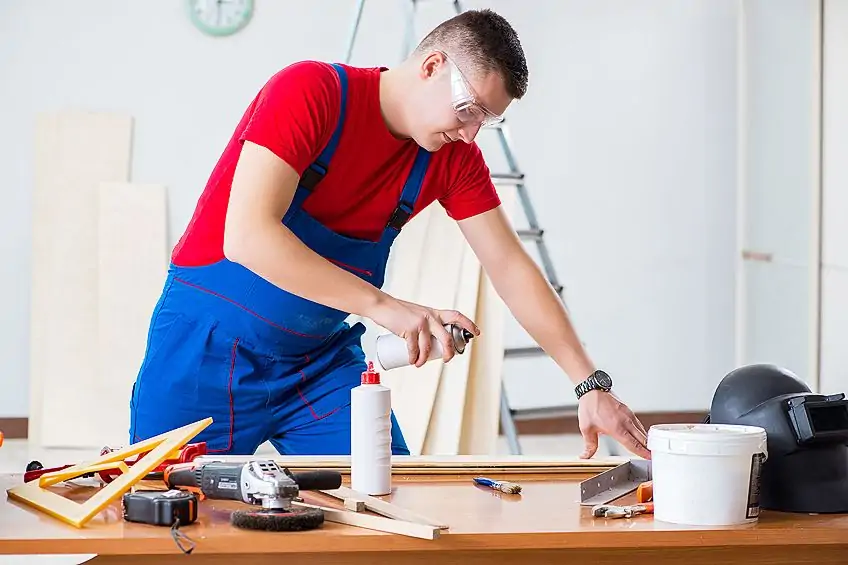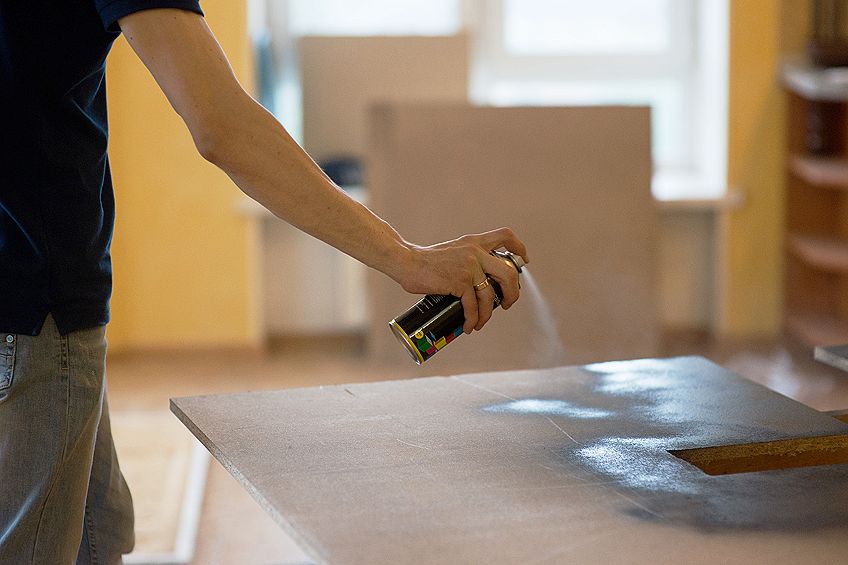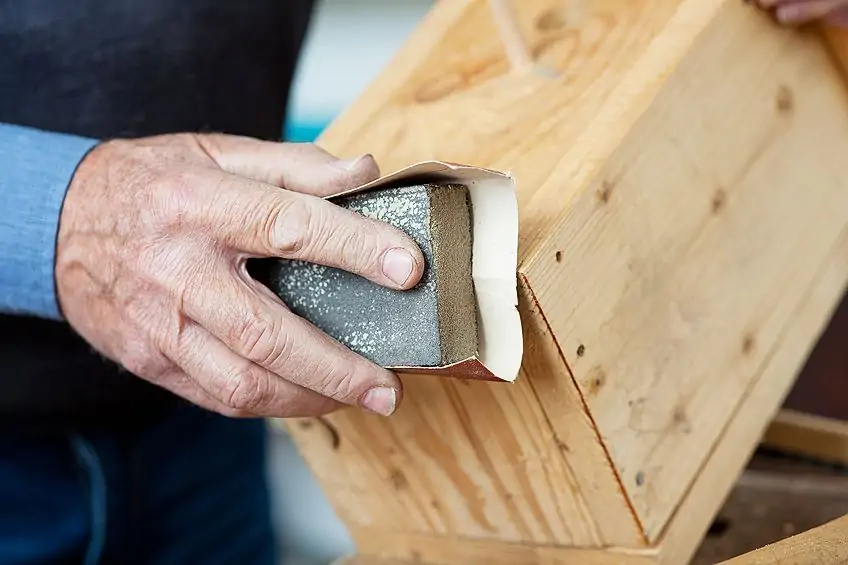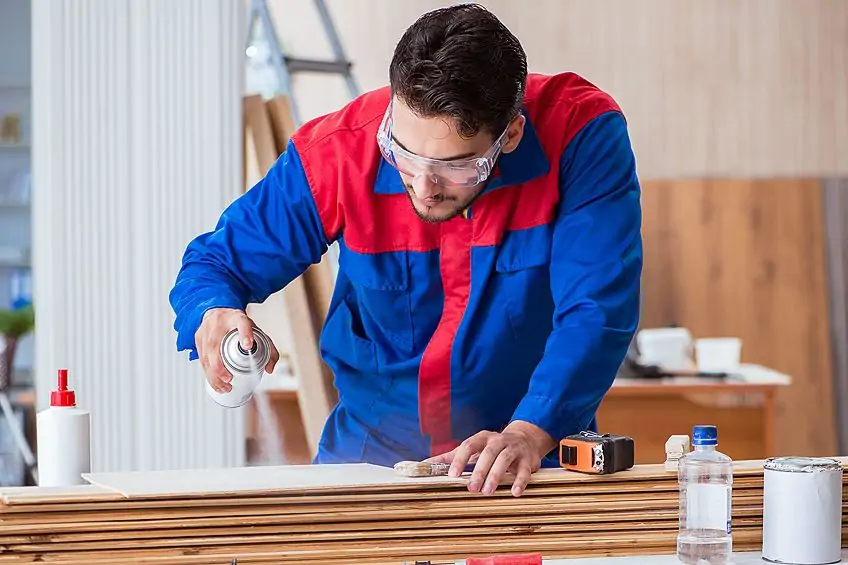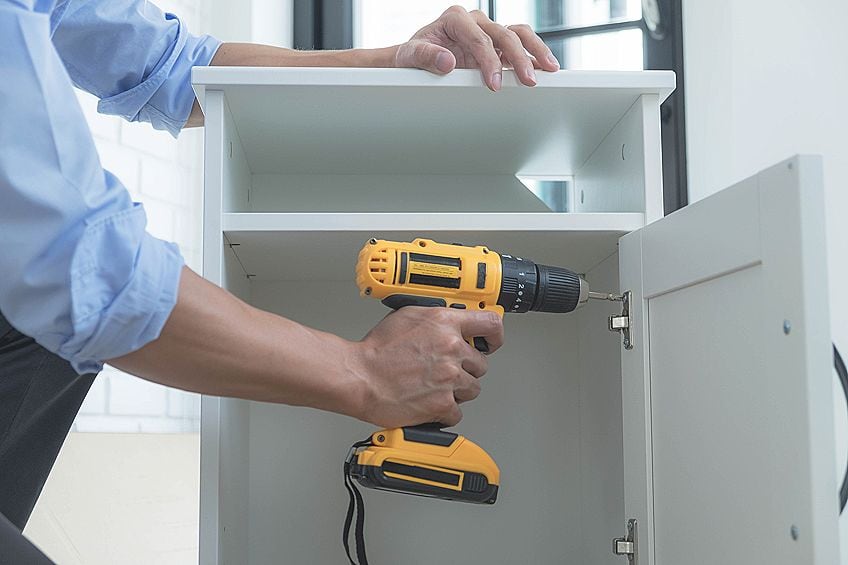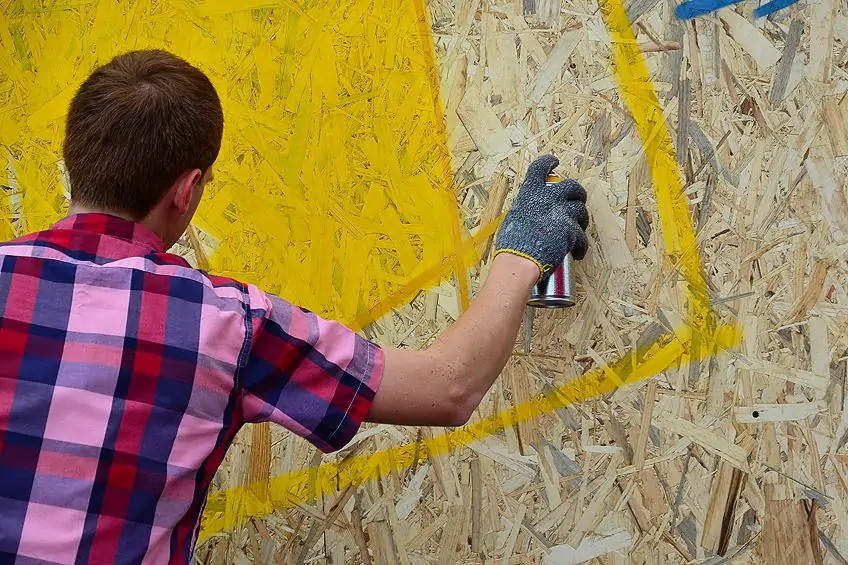How to Spray Paint Wood Furniture – In-Depth Tutorial
This post may contain affiliate links. We may earn a small commission from purchases made through them, at no additional cost to you. You help to support resin-expert.com
A fresh coat of paint can rejuvenate even the most tired and worn-out wooden furniture. Choosing to spray paint your wooden furniture is an easy way to get the job done, as the process requires no paint trays, brushes, or rollers, resulting in less clean-up. This article will help you choose the right spray paint as well as guide you through the process of using spray paint on wood.
Table of Contents
What Is the Nature of Spray Paint?
In 1949, Edward Seymore began developing spray paint. His original iteration was designed for painting radiators more timeously. However, the technology had already been around since 1931, when a Norwegian engineer named Eric Rotheim invented the first aerosol paint. At roughly the same time that Seymore was working on his developments, Krylon and Crown Inc. came out with cylindrical canisters made from metal that dispensed spray paint in much the same way our modern spray paint cans do.
Spray paint, also called aerosol paint, is usually found in pressurized aluminum cans. When the nozzle is pressed, it opens a value that forces a fine mist of paint through the nozzle, allowing for the application of multiple layers very quickly with amazing surface coverage.
Spray painting is fairly easy to do, although it may take a bit of practice to gain perfect control over the can. With a bit of time, the spray can will eventually become an extension of your hand, and you will be laying down silky smooth coats of paint.
Because the applicator is the can itself, you do not need a brush, thus eliminating the risk of any unwanted brushstrokes on the surface you are painting. Spray paint not only dries fast, but most spray paints are oil-based. Once cured, oil-based paints are generally more durable than water-based paints, which is great for surfaces that need to resist the rigors of use, wear, and tear.
There are also many colors and finishes to choose from and because there are no applicators like brushes involved, cleaning up is simple.
Priming your Wooden Furniture is Important
Spray painting your wooden furniture may have piqued your interest because of how simple it is. But before grabbing a can of spray paint and letting rip on that beat-up old coffee table, you should select a quality wood primer. When painting wood furniture or wood in general, it is always a good idea to paint an undercoat of primer. This will protect the wood from the paint and ensure proper adhesion, thus increasing the durability of your paintwork. Lucky for us, just like paint, wood primers can be found in handy spray cans.
It is now time to take a look at some of the best spray paints for wood. Before you rush into spray painting your piece of furniture, be sure to read our tutorial on how to spray paint wood. This tutorial will provide you with an overview of the process and help you to achieve the best results while using your chosen products.
How to Spray Paint Wooden Furniture
Now that you have selected your spray paint and primer, you are just about ready to get started with the painting. For the best results, it is advised that you gather a few more supplies. The supplies listed below and the subsequent tutorial will guide you through the process of spray painting wood and achieving the best finish. There is nothing worse than spending money on supplies only to be less than happy with the result. Take your time, enjoy the process, and be sure to follow the safety precautions, as spray paint fumes can be hazardous.
Supplies for Spray Painting Wooden Furniture
- R95 respirator mask
- Spray paint
- Primer
- Sandpaper
- Tack cloth
- Masking tape
- Disassembly tools
- TSP soap (Trisodium Phosphate)
- Gloves
Step 1: Disassemble
Trying to paint around fittings and in corners can be difficult to do without getting paint on areas that you would prefer to remain paint-free. Trying to achieve this with spray paint is near impossible. It is for this reason that you will want to remove any fittings such as draw handles or doorknobs. The more disassembly you can do, the easier the paint job will be. Removing draws and even doors can make the job easier. Simple tools such as screwdrivers and hex keys are all that should be needed for this.
Step 2: Cleaning the Surface
If you are painting raw wood, you should skip this step as water can damage the wood. However, if you are dealing with an old coat of paint or varnish, it is advised that you use TSP soap to wash away any dirt, grease, or grime that may affect the adhesion of the paint. This soap is very hard, so be sure to don a pair of dishwashing gloves to protect your hands.
Step 3: Sanding
Whether you are dealing with painted wood or raw wood, sanding is a great place to start. This process not only removes irregularities on the surface but also creates a good surface profile for your paint to hold onto. If your piece of furniture has any nicks or gouges, you may want to use some wood filler to patch them up. You can also use an orbital sander to make sanding a little quicker – just do not overdo it.
The idea here is to simply roughen up the surface so as to strengthen the paint bond. Depending on the condition of the wood, you may want to start with 80-grit and work your way up to 120- or 220-grit. Always sand in the direction of the grain and wear a dust mask to prevent you from inhaling dust.
Be careful when refurbishing antique furniture, as some of the paints used in the past contain lead, which can cause health problems.
Step 4: Remove Dust and Apply Masking Tape
A tack cloth will do an amazing job of removing dust from freshly sanded furniture. Alternatively, you can use a lint-free cloth. Using a vacuum cleaner is a neat trick and can make the task a breeze. We then recommend that you use painter’s tape to seal off any areas you do not want to paint. Make sure the painter’s tape is pressed down firmly, as spray paint can creep in underneath if you allow it.
Step 5: Spray on the Primer
When it comes to the primer, it is best to opt for a white shade if the spray paint you are using is light in color, and a grey primer if your spray paint is dark. Spray the primer in a well-ventilated area to avoid inhaling potentially harmful fumes. Shake up your can of spray paint for about a minute before you begin spraying to make sure it is mixed properly.
Spray on your primer while holding the can about eight inches from your piece. Use a sweeping motion to create a light, even coat, as well as to avoid drips forming. Allow your primer to dry for about an hour. Once your primer is dry, you may need to give the primed surface a light sanding if there are any drips or imperfections in your coat.
Step 6: Apply Your Spray Paint
Just as you did with your primer, spray your paint onto your piece with gentle sweeping motions while holding your can roughly eight inches from the surface. You may find that you have better control when using short bursts as opposed to long bursts. This can also save paint and ensure an even finish.
If you are working on a large surface area, it is a good idea to shake the can from time to time to make sure that the paint is mixed properly.
Let the paint dry before applying another coat. The more coats you apply, the better coverage you will achieve. Refer to the manufacturer’s instructions regarding the drying time needed in-between coats. This may vary from one manufacturer to another, and remember that the climate in your area may also be a contributing factor to the drying time.
Step 7: Reassemble
It is best to wait for your spay paint to cure completely before reassembling and removing the painter’s tape. If you start using your piece of furniture before it has completely cured, you risk chipping or damaging your freshly applied paint. If you are unsure about the time it will take the paint to cure, refer to the paint manufacturer’s directions, or to be safe you can give it 24 hours. Lastly, bask in the glow of your accomplishment!
Tips and Tricks
- A good trick to test if your primer has achieved a good enough bond is to leave your primer to dry overnight and then use your fingernail to scrape the surface the following day. If the paint comes off easily, there is an adhesion issue. This could be due to moisture or oil in the wood.
- If you have to work indoors, use some masking tape to stick down some newspaper to your floors to protect them from overspray. Also, use a drop cloth to protect nearby furniture and, above all, make sure that the room is well ventilated.
- It is best to use short, controlled strokes when spray painting wood. This will enable you to lay down an even layer of paint as well as reduce overspray, thus saving you paint and money.
If you are applying multiple coats of spray paint, a light sanding between coats can enhance the finish and help you achieve a smoother result. However, always refer to the manufacturer’s directions for the best results.
- If you are painting resinous wood or wood with a high oil content, it is best to apply an aluminum wood primer to the surface of the wood before spray painting. This will reduce the chances of adhesion failure.
- It is best to apply a few very light coats of spray paint and allow each layer to dry before applying the next. Laying the spray paint on too thick can result in a wrinkled or scrunched-looking spray finish.
- If the nozzle on your spray paint can is blocked, you may be able to loosen the blockage by popping off the nozzle and soaking it in paint thinner. Let the nozzle soak for roughly 20 minutes. This should make it as good as new.
Frequently Asked Questions
Do I Have to Apply a Primer to Wood Before Spray Painting?
Although you can probably get away with spray painting wood without using a primer, especially when using a two-in-one paint and primer, it is not recommended. For the best results, it is always a great idea to apply a primer before spray painting wood.
How Can I Achieve an Ultra-Smooth Finish When Spray Painting Wood?
Nothing can beat the look of a professionally spray-painted piece of furniture. This can be achieved if you have access to an air compressor as well as spray equipment. It is not hard to do if you have the correct gear. Alternatively, a good rule of thumb for achieving a smooth finish is to spray multiple coats with a can.
How Soon After Spraying the Primer Can I Apply the Topcoat?
Most spray paints will dry to the touch in about 30 minutes, but it is best to wait for about an hour before you apply the first coat of spray paint. For the best results, refer to the manufacturer’s instructions, as the drying time will vary from one manufacturer to another.
Can I Spray Paint on Top of Varnish?
Yes, you can spray paint over varnish. However, preparation is key to doing it successfully. For the best results, sand down the varnished wood to create an ideal surface profile for the paint to hold onto. Be sure to use an oil-based spray paint and primer.
How Many Coats Should I Spray on Wood?
A good rule of thumb is to always spray more than one coat. Two coats are good, but three coats are better. The more coats you apply, the better the coverage and the thicker the final coat, which will result in a durable finish that will last.
How Can I Stop Drips From Forming on the Surface While Spray Painting Wood?
When working with quick-drying spray paint on wood, you will get the best results by applying multiple thin coats rather than one thick coat. Applying one thick coat of spray paint can lead to drips forming, which can ruin the look of the surface.
How Can I Prevent Finger Fatigue When Spray Painting Wood?
When spray painting a large surface area, you may find that your finger gets a little tired or even painful. If you are looking for extra comfort when spray painting wood, you may want to look at purchasing a trigger spray attachment, which will make the job a lot more comfortable.


